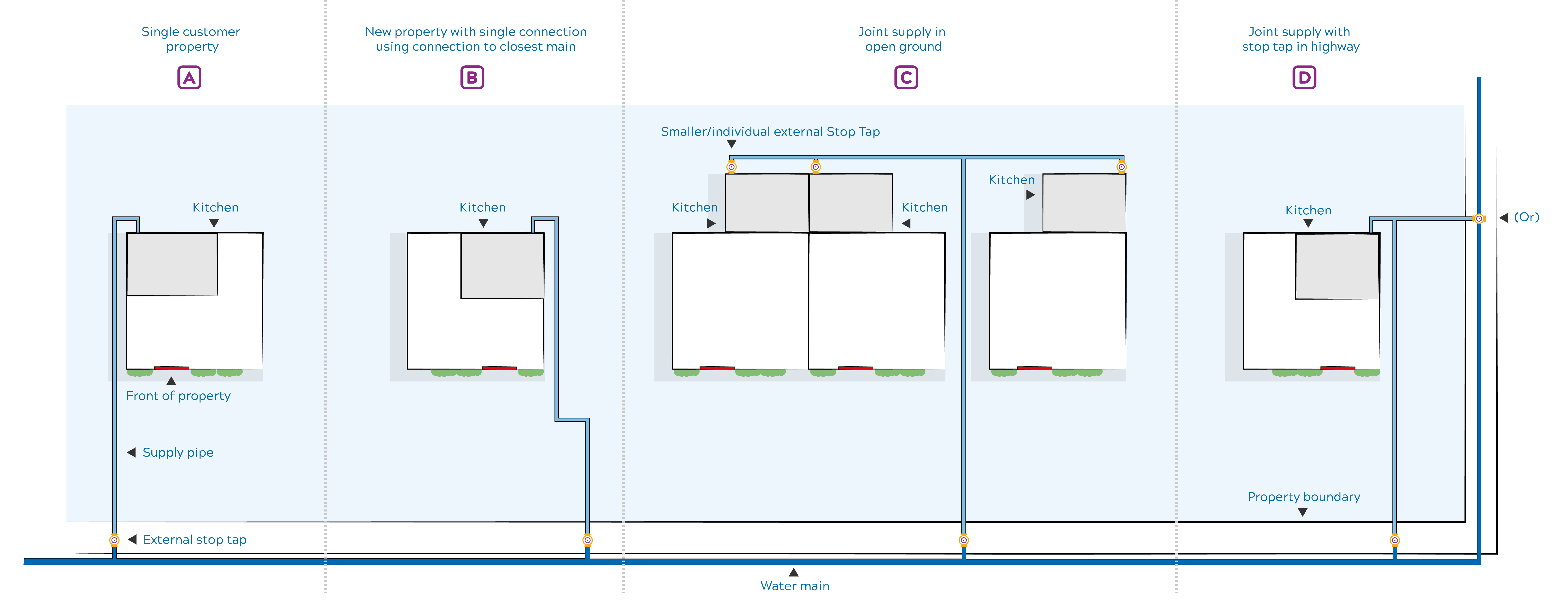{{selectedAlertBand.alertDescription}}
{{selectedAlertBand.incident.heading}}
Message last updated - Saturday 27th July 2024
{{selectedAlertBand.incident.heading}}
Message last updated - Saturday 27th July 2024
Message last updated - Saturday 27th July 2024
{{selectedAlertBand.alertLinkText}} {{selectedAlertBand.alertLinkText}}
For further updates subscribe
Your internal stop tap is usually near the point where your water supply pipe enters your home.
Internal stop taps aren’t used very often so it’s important to know where yours is. Check regularly to ensure it’s working properly - you may need to turn the water off in an emergency.
Its location can vary depending on the style and age of your property, but the most common places are:
Internal stop taps aren’t used very often so it’s important to know where yours is. Check regularly to ensure it’s working properly - you may need to turn the water off in an emergency.
Turn the stop tap in an anti-clockwise direction until it's fully open, then rotate back a quarter of a turn to prevent it from seizing up.
If you don’t have an internal stop tap or it isn’t working properly, contact a plumber and arrange for a new one to be installed as soon as possible. It’s a legal requirement of the water regulations.
External stop tap
This forms part of our water distribution system and is normally found on the footpath, verge or just inside your property boundary under a plastic or metal cover or in your meter chamber. You may need a stop tap key to open it.
External stop taps are used for turning off the water during a water leak or if you’re unable to find or operate your internal stop tap.
If you’re unsure where your external stop tap is, and your property’s a similar design to your neighbours, ask if they know where theirs is. It’s likely to be in the same place.
In some cases one external stop tap will serve a number of properties (shared supply). This is typical for older terraced properties, so always let your neighbours know if you’re going to turn off their supply too.
Stop tap locations
Click the image to view at full size

This diagram shows common locations of external stop taps. Once the supply pipe enters the boundary of the property it is the responsibility and ownership of the property occupier. Any leaks or issues outside the property boundary e.g. In the highway, are Anglian Waters responsibility. In some circumstances properties can share a connection to our water main but should have separate entry points into each of their properties (Diagram C) meaning each property can isolate their water individually, or as a group using the main stop tap in the highway.
How to operate
Operating your external stop tap should be simple for you to do, standard water fittings are all clockwise closing and anti-clockwise opening. Take off the stop tap lid and operate the tap. Be sure not to over tighten when closing as this can cause blockages or the inability to reopen the stop tap.
If you’ve any problems operating the external stop tap, call us.